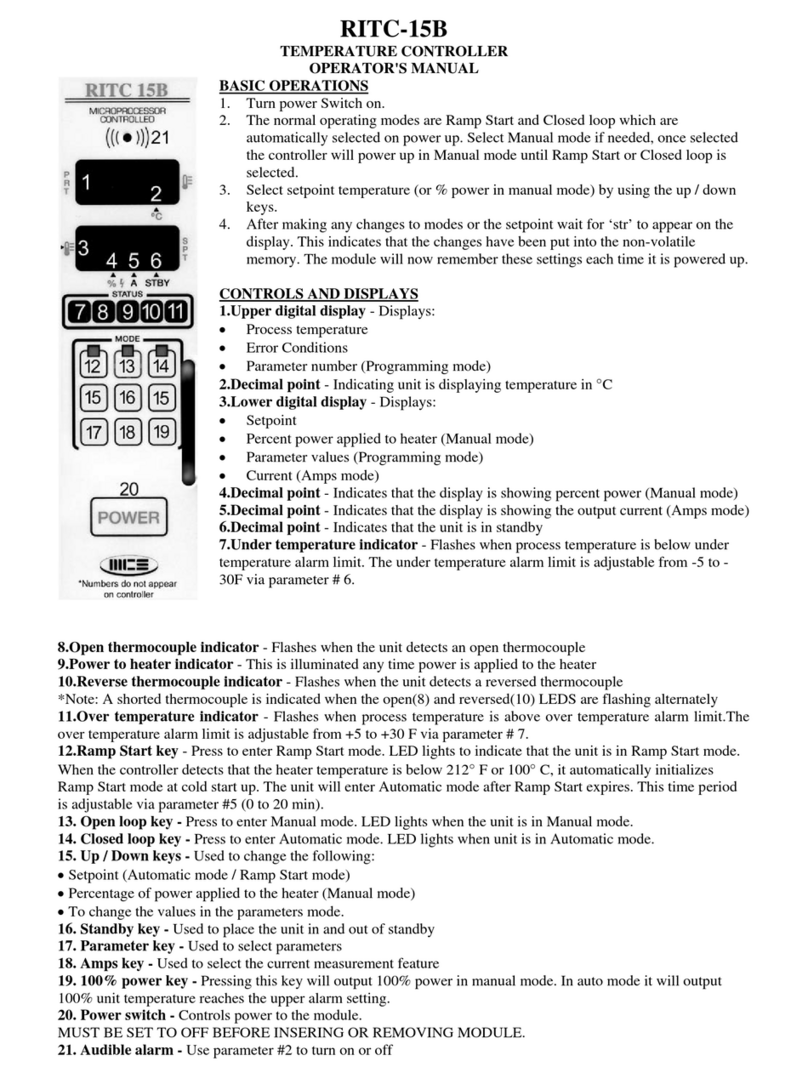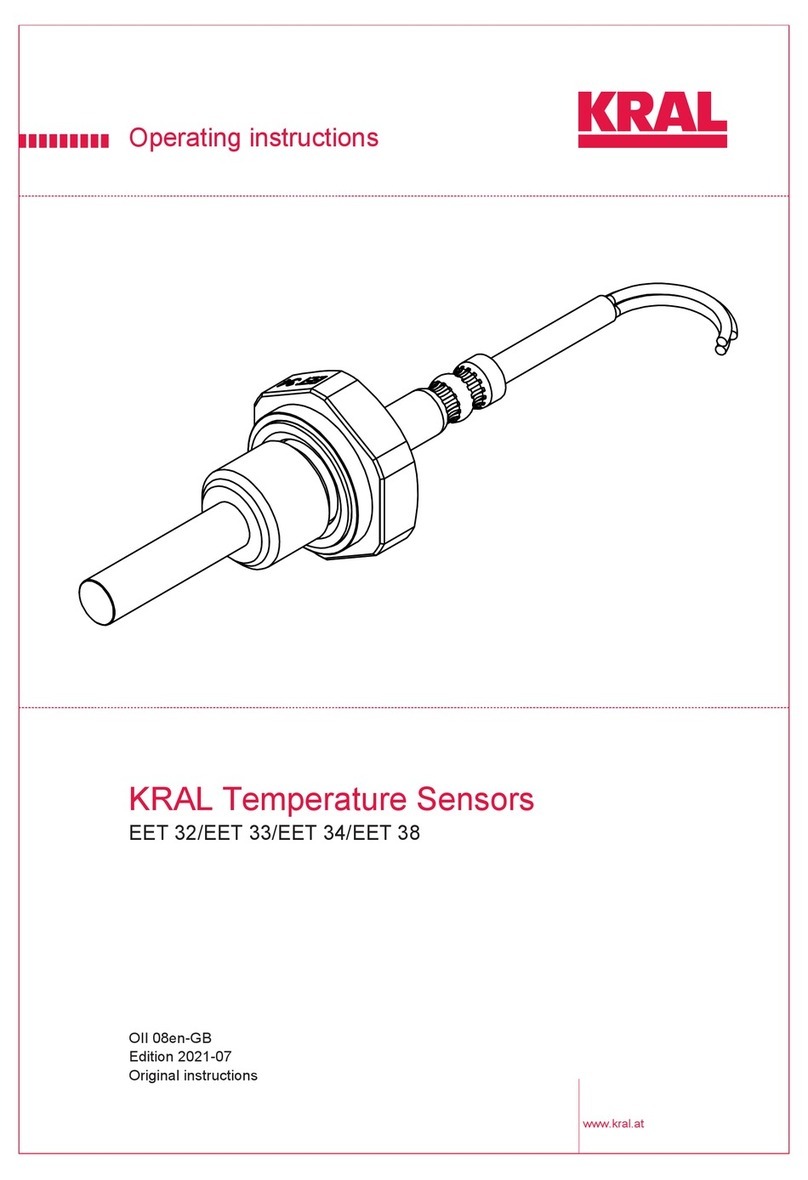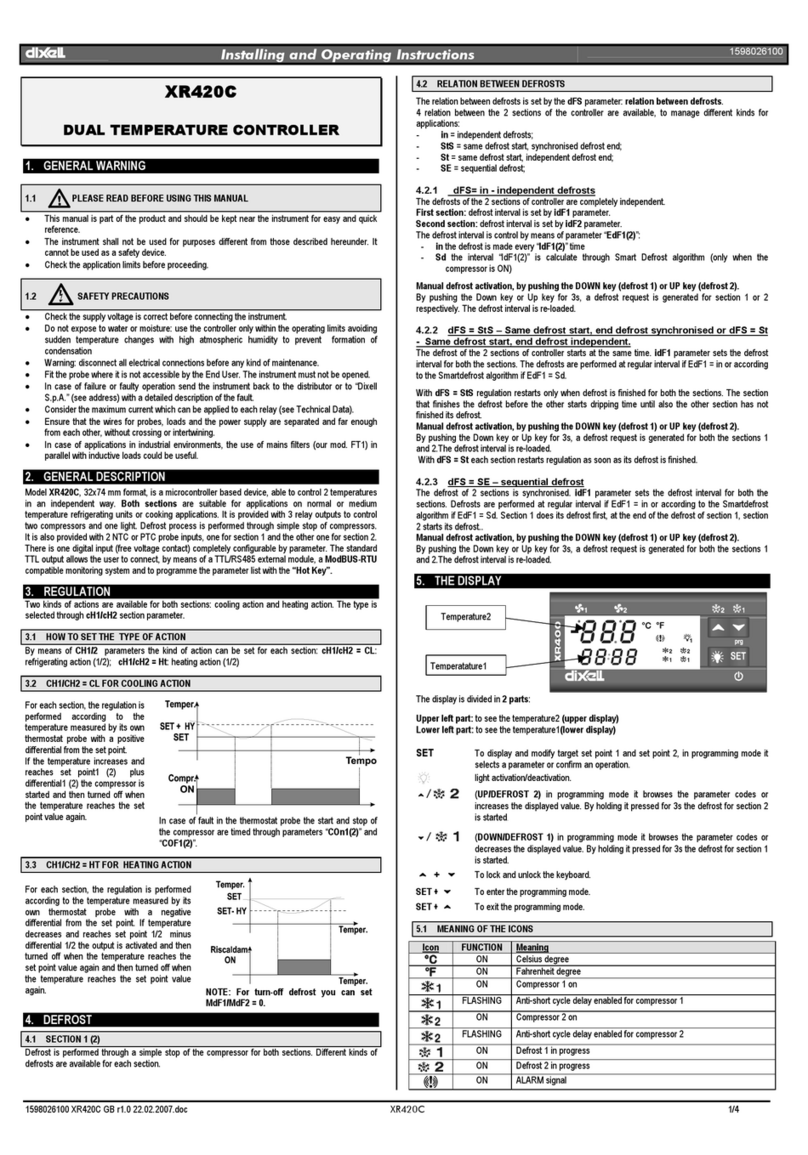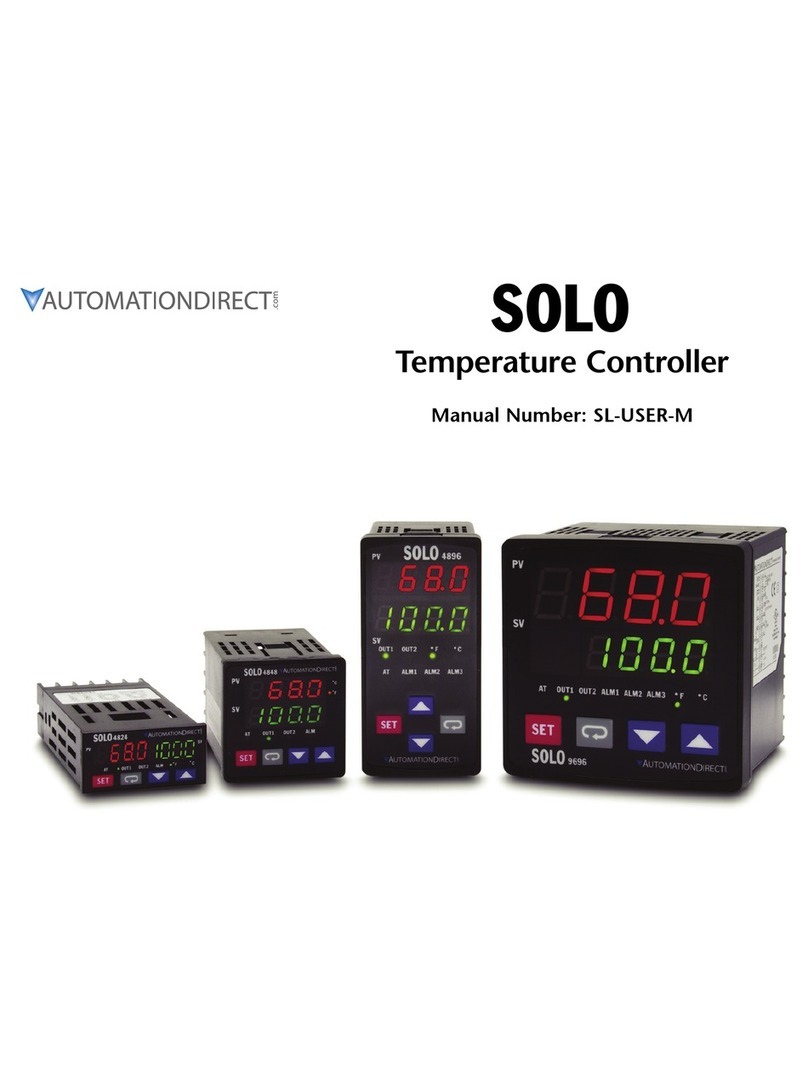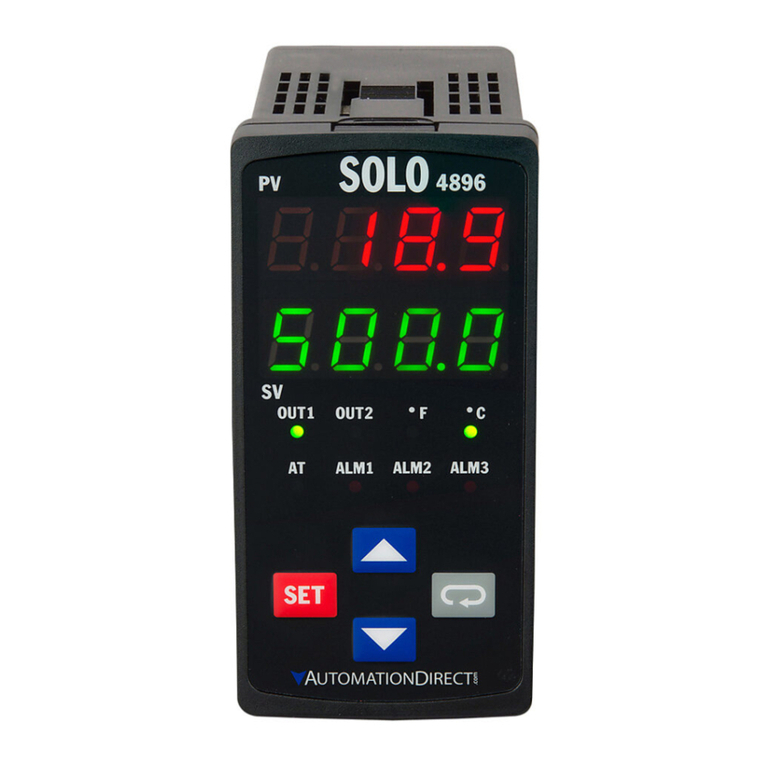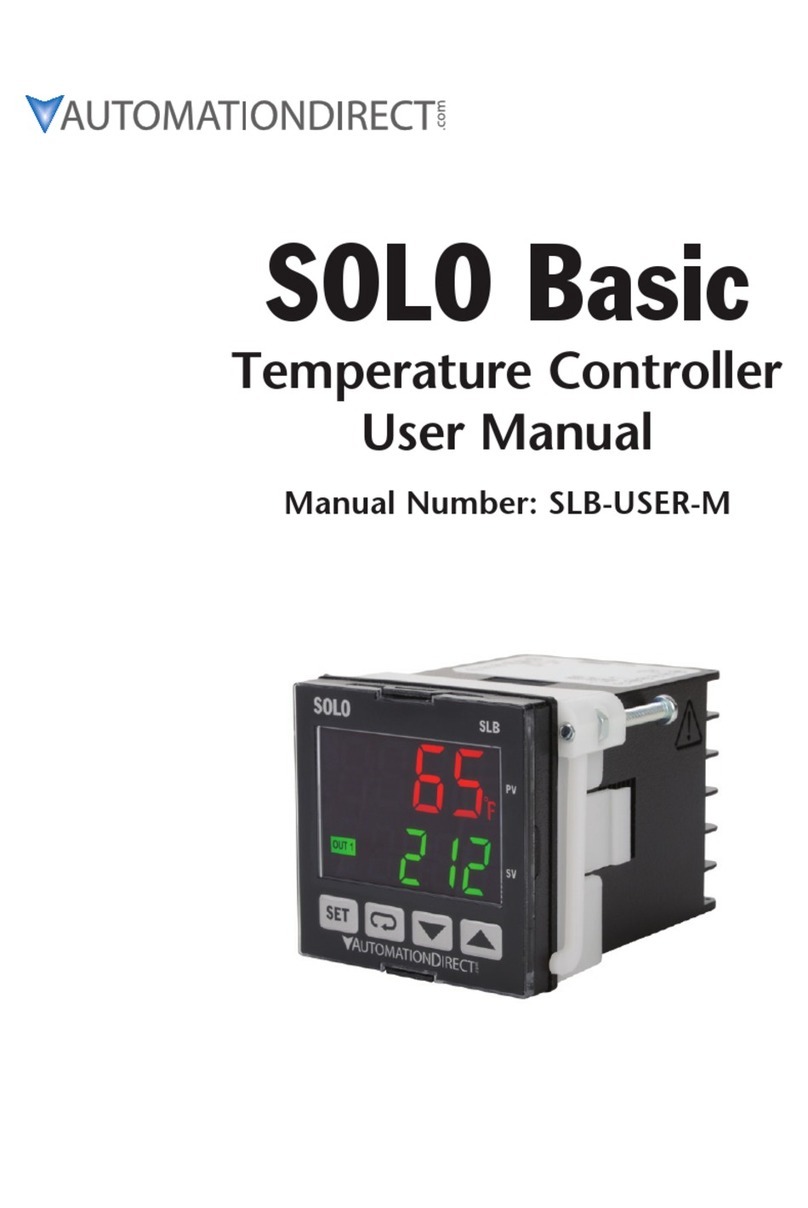
~ AVERTISSEMENT ~
Nous vous remercions d’avoir acheté l’équipement d’automatisation de Automationdirect.
com™, en faisant des affaires comme AutomationDirect. Nous tenons à ce que votre nouvel
équipement d’automatisation fonctionne en toute sécurité. Toute personne qui installe ou utilise
cet équipement doit lire la présente publication (et toutes les autres publications pertinentes) avant
de l’installer ou de l’utiliser.
Afin de réduire au minimum le risque d’éventuels problèmes de sécurité, vous devez respecter
tous les codes locaux et nationaux applicables régissant l’installation et le fonctionnement de
votre équipement. Ces codes diffèrent d’une région à l’autre et, habituellement, évoluent au fil du
temps. Il vous incombe de déterminer les codes à respecter et de vous assurer que l’équipement,
l’installation et le fonctionnement sont conformes aux exigences de la version la plus récente de ces
codes.
Vous devez, à tout le moins, respecter toutes les sections applicables du Code national de
prévention des incendies, du Code national de l’électricité et des codes de la National Electrical
Manufacturer’s Association (NEMA). Des organismes de réglementation ou des services
gouvernementaux locaux peuvent également vous aider à déterminer les codes ainsi que les normes
à respecter pour assurer une installation et un fonctionnement sûrs.
L’omission de respecter la totalité des codes et des normes applicables peut entraîner des
dommages à l’équipement ou causer de graves blessures au personnel. Nous ne garantissons
pas que les produits décrits dans cette publication conviennent à votre application particulière
et nous n’assumons aucune responsabilité à l’égard de la conception, de l’installation ou du
fonctionnement de votre produit.
Nos produits ne sont pas insensibles aux défaillances et ne sont ni conçus ni fabriqués pour
l’utilisation ou la revente en tant qu’équipement de commande en ligne dans des environnements
dangereux nécessitant une sécurité absolue, par exemple, l’exploitation d’installations nucléaires,
les systèmes de navigation aérienne ou de communication, le contrôle de la circulation
aérienne, les équipements de survie ou les systèmes d’armes, pour lesquels la défaillance du
produit peut provoquer la mort, des blessures corporelles ou de graves dommages matériels ou
environnementaux («activités à risque élevé»). La société AutomationDirect nie toute garantie
expresse ou implicite d’aptitude à l’emploi en ce qui a trait aux activités à risque élevé.
Pour des renseignements additionnels touchant la garantie et la sécurité, veuillez consulter la
section Modalités et conditions de notre documentation. Si vous avez des questions au sujet
de l’installation ou du fonctionnement de cet équipement, ou encore si vous avez besoin de
renseignements supplémentaires, n’hésitez pas à nous téléphoner au 770-844-4200.
Cette publication s’appuie sur l’information qui était disponible au moment de l’impression. À la
société AutomationDirect, nous nous efforçons constamment d’améliorer nos produits et services.
C’est pourquoi nous nous réservons le droit d’apporter des modifications aux produits ou aux
publications en tout temps, sans préavis ni quelque obligation que ce soit. La présente publication
peut aussi porter sur des caractéristiques susceptibles de ne pas être offertes dans certaines versions
révisées du produit.
Marques de commerce
La présente publication peut contenir des références à des produits fabriqués ou offerts par
d’autres entreprises. Les désignations des produits et des entreprises peuvent être des marques de
commerce et appartiennent exclusivement à leurs propriétaires respectifs. AutomationDirect nie
tout intérêt dans les autres marques et désignations.
Copyright 2023-2024, Automationdirect.com™ Incorporated
Tous droits réservés
Nulle partie de ce manuel ne doit être copiée, reproduite ou transmise de quelque façon que
ce soit sans le consentement préalable écrit de la société Automationdirect.com™ Incorporated.
AutomationDirect conserve les droits exclusifs à l’égard de tous les renseignements contenus dans
le présent document.



